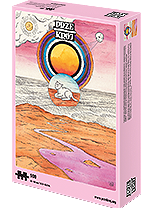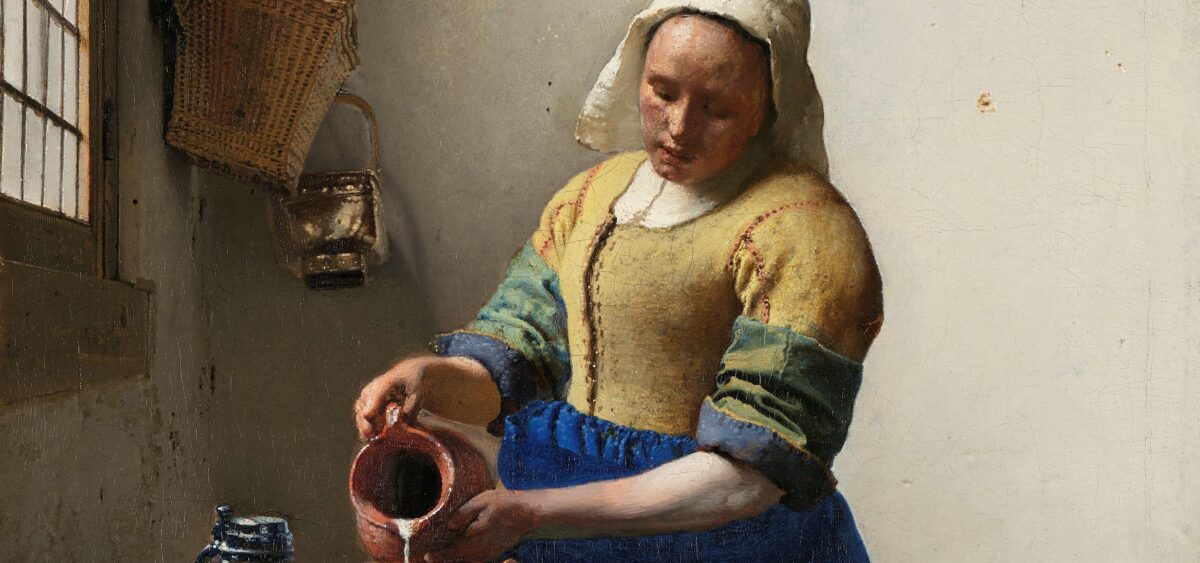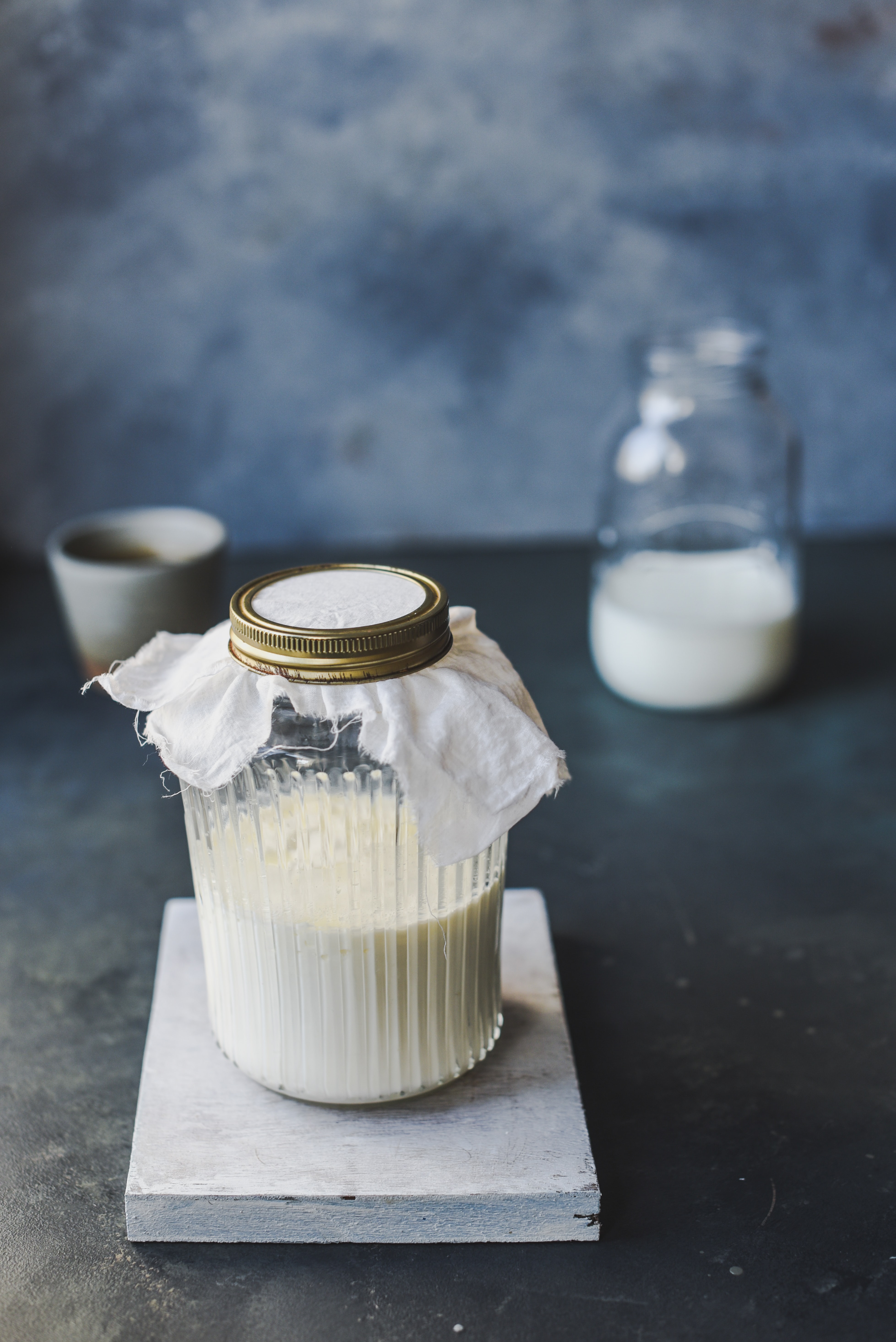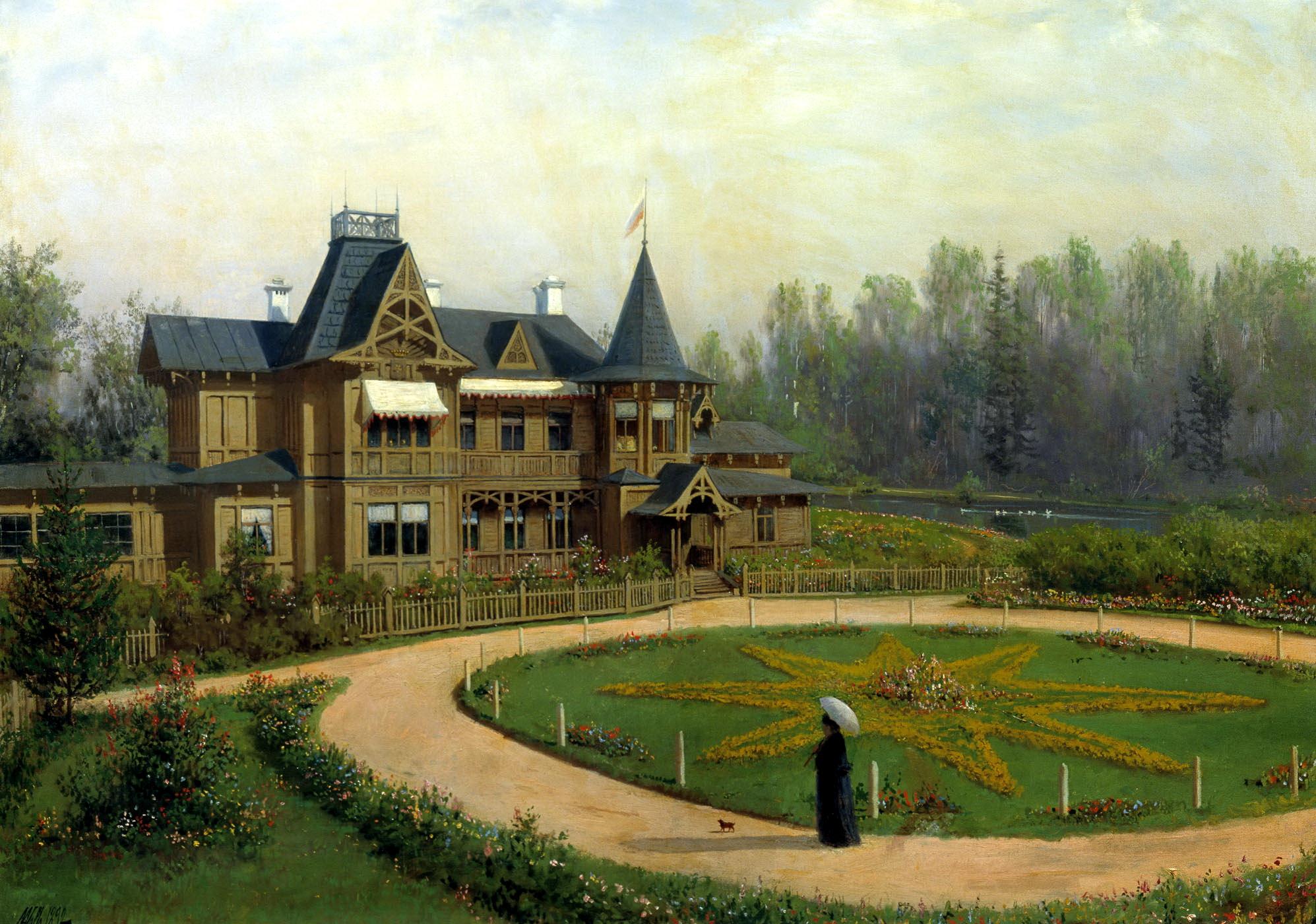
In the very center of medieval Cockaigne, a mythical land of milk and honey, there once was a volcano that spewed cheese instead of lava. Everyone could eat as much of it as they wanted, since it flowed endlessly in this paradise. For centuries, happiness in the real world was considered incomplete without milk and other dairy products.
No other food product has had such good press throughout history. Milk, one might say, flowed across the divides that governed culinary culture, and culture in general: it bridged the gap between wine- and beer-loving Europe, between the worlds of wheat and rice, and the extremely hostile realms of olive and butter (although butter is nothing but processed milk). Wine—a Mediterranean legend heavy with Eucharistic symbolism and portrayed as a noble drink in the Bible—can also be dangerous and one must be careful with it. Even bread, which seemingly evokes only the best associations—as a product created through hard work and patience, made to be shared with others (the etymology of the English word “company” can be traced back to the Latin companio, meaning “one who eats bread with you”) and connected to Christian transubstantiation—is not worshiped as enthusiastically as milk. The same goes for meat, the primeval product (hunting came before agriculture) that was rejected by anchorites and the more earnest monks. Only milk has always been praised (or wasn’t mentioned at all).
Among Mammals
When Hera spilled her own milk while breastfeeding little Hercules, the drops turned into stars. The Greek word gala, “milk,” forms the beginning of the word Galaksias—the Milky Way—which later became “galaxy” in English. This isn’t the only cosmogony that includes the motif of milk, but what differentiates it from similar origin stories is that the breast milk is “human” (divine, to be precise). This awareness of the mammalian nature of humans contributed to the popularity of milk as a nutritious drink in the Mediterranean. Little Hercules suckled Hera’s milk, while the prophet Isaiah constructed a vivid picture of the people of Jerusalem suckling the breast of the city itself, depicted as a woman: “That ye may suck, and be satisfied with the breasts of her consolations; that ye may milk out, and be delighted with the abundance of her glory.” In the New Testament, milk acquires spiritual meaning. The same approach is adopted in early Christian and medieval exegesis. Milk appears to be the best thing a mother can bestow upon her child. This pertains to Holy Mary as well. Depictions of Mary breastfeeding Jesus appeared in Byzantium as early as the eighth century. While pagan Antiquity perceived milk merely as the drink of heroes, in Christianity it became the drink of God incarnate. The theological and iconographic culmination of this theme dates back to the 12th century, when the depiction (and cult) of breastfeeding Mary appeared in the West, reaching its strange apex in a vision in which St. Bernard of Clairvaux, the most important of the Cistercian theologists, was himself breastfed by the Savior’s Mother.
The nobleness of milk has various sources. Sometime between the end of Antiquity and the end of the first millennium, white slowly became a supercolor that could not be matched by either red or blue. In the monograph White: The History of a Color, Michel Pastoreau presents a list of cultural phenomena associated with white. From Christian (the lamb, dove, pelican) and power-related symbols (glory, monarchy, head of the armed forces) to an expanded catalog of female names (not only Blanche and Albina, but also Gwendolyn, Jennifer, Margaret, and many others), this color made a big comeback at the beginning of the 19th century—the age that allowed milk to enjoy longevity through the process of pasteurization.
Milk hadn’t been very popular in ancient times, before it gained its peculiar status—as if it hadn’t been able to keep up with Roman refinement. For instance, Tacitus describes the diet of the Germanic tribes at the turn of the second century as follows: “Their food is plain—wild fruit, fresh game, and curdled milk.” On the other hand, his contemporary Apicius, the first professional Roman author of cookbooks, describes dishes based on milk so often that it must have been a staple of the Roman diet in those times. An entire chapter in his Art of Cooking is devoted to sweets and dishes made with curdled milk. It is worth noting that the chapter in question is entitled “Polyteles,” meaning (dishes that are) extremely unique, rare, expensive, and refined.
Primeval Cows
Ymir—the primordial giant from the Norse myth recounted by the Icelandic poet Snorri in the 13th-century Prose Edda—suckles “the noblest of cows,” Auðumbla, the ancestor of all cows. The Zoroastrian Gavaevodata gives life to all animals. The cow-headed Hathor in ancient Egypt holds the sun disk between her horns. However, it is Kamadhenu (or Surabhi), the Sanskrit mother of all cows, sometimes portrayed with the head and torso of a woman, that makes wishes come true and deserves special attention. In her native India, butter and cheese enjoyed a surge in popularity thanks to milk long before the founding of Hinduism.
The Indo-Aryan peoples are known to have consumed sweet and sour milk, butter and melted butter (an early version of ghee). Cows became a currency in India and were awarded as actual damages in murder cases. The exorcisms cited in the ancient Rig Veda are most often directed against those who harm cattle. Descriptions of the punishment for Brahmin cattle theft are among the first Atharva-veda curses, a collection of hymns in the Vedas. However, it is not milk itself but dairy products such as butter and cheese that have gained great significance throughout India. Ghee is a tool of exorcism, a substance used to anoint rulers (alongside milk, cottage cheese, and other dairy foods) and poured over the mourning pyres in the Mahābhārata. Only sour cream turns out to be a largely overlooked dairy product, absent from cosmogonies and rarely mentioned in myths.
Does Butter Divide Us?
Various mythologies, as well as Greek and Roman literature, are full of olive oil. It was a commonly traded good, as well as—apart from its most obvious uses—fuel for lamps, even those used for religious purposes. No other fat enjoyed the same popularity. In Milk: A 10,000-Year History, American historian Mark Kurlansky argues that there is a clear cultural divide between olive and butter, the latter being a symbol of barbarism. According to him, butter was mainly used by barbarians; the Romans who used it were usually plebeians. On the other hand, Pliny the Elder, a Roman historian living in the first century, notes that butter was indeed seen as a delicacy among barbarians—but this is only a short comment in a long passage about the benefits and healing powers of dairy. Pliny notices that milk can contain different amounts of fat, depending on the animal it comes from; he also mentions cottage cheese, classifies butter as fresh and aged (these two categories appeared in recipes until the mid-20th century) and describes various methods of producing it. It cannot be ruled out that while praising butter, he is referring to its use not only among the Germanic or Scythian tribes, but also the Romans. This is confirmed by Pliny’s peer Lucius Columella, author of a twelve-part treatise on agriculture which describes dairying in the volume devoted to the breeding of cattle, horses, and mules. Moreover, his recipe for asparagus served with melted butter remains popular to this day.
Butter is also discussed by the Greco-Roman doctor Galen at the turn of the third century. He created the popular theory of humoralism (traditionally attributed to Hippocrates), according to which the four psychophysical types were determined by four kinds of bodily fluids (yellow bile, black bile, blood, and phlegm). He also created the dietary theory that shaped European medicine until the late 18th century. Galen devoted special attention to milk, analyzing its structure and uses, praising its laxative properties. He appreciated the cooling influence of curdled milk on hot humors and was a great enthusiast of butter, which he found as valuable as olive oil.
Therefore, we can only partially agree with Kurlansky and assume that it was not the culinary, but the cosmetic use of both fats that marked the boundaries between the civilized Greco-Roman world—whose representatives rubbed themselves down with olive oil whenever they could—and the conspicuous barbarians, fond of rubbing butter into their hair (with all the smelly consequences of this custom).
These olive-butter animosities lasted entire millennia. The Scandinavian Libellus de arte coquinaria [The Little Book of Culinary Arts] is a 13th-century collection of extravagant recipes full of exotic roots, Southern European spices, expensive saffron, and hardly-accessible black pepper. The dishes described in the book are evidence of lively trade relations between the Vikings and the south. They must have been widespread enough for the exotic spices not to need any specific descriptions in the book. There is cumin, cinnamon, nutmeg, cardamom, and ginger root, as well as wine and walnut oil—but no sign of olive oil. Could it be that northerners placed greater value on dairy fat? Perhaps, since Norway was, after all, a major European exporter of butter in the Middle Ages and a country where it was used to pay taxes. In the late 12th century, Norwegians drove German merchants out of Bergen, deeming the exchange of Norwegian butter for German wine unfavorable.
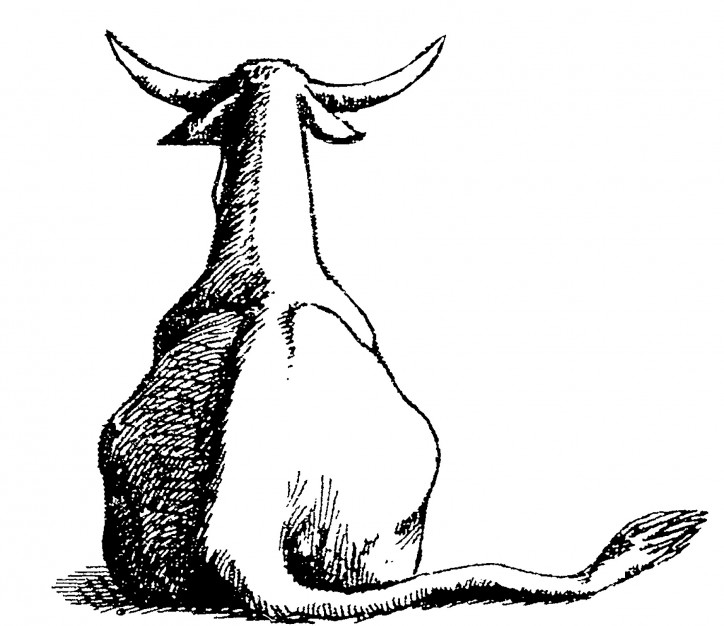
Cheese Unites Us
While both butter and oil had their supporters and opponents, cheese was being eaten everywhere: north, south, east, and west of the Alps.
One could even say that cheesemaking was one of the first successes of the Neolithic Revolution. Cottage cheese, or rather fromage blanc, made from unheated sour milk, appeared alongside farming. Over time it began to be heated in order to obtain the curd enjoyed today. The origin of rennet cheeses, legend has it, can be traced to milk coagulating on its own in a goatskin made from a calf’s stomach. In India, where rennet was hard to come by, paneer remains the most common cheese.
The Romans included soft cheese in their daily prandium—one of the two meals they consumed during the day. However, the false syllogism from Seneca’s Moral Letters to Lucilius (“‘Mouse’ is a syllable. Now a mouse eats its cheese; therefore, a syllable eats cheese.”) speaks not only to the universality of cheese, but also to the fact that the cheese in question was probably hard—most likely rennet. This is confirmed by the typology of cheese carefully designed by the Roman poet Martial. In addition to cheeses from the city of Trebula in Campania (which probably had the texture of halloumi), and the popular smoked goat’s cheese from Rome’s Velabrum, in his Xenias the poet also mentions cheeses from Luni and, presumably, pecorino-type cheeses from Abruzzo (or rennet cheeses). Martial’s book is also interesting because his typology (bubuli, ovili, caprini—cow, sheep, goat) clearly indicates the strong presence of cow’s-milk cheeses in the Roman diet. Pliny cataloged various production sites of the most prized Roman cheeses. Tellingly, the historian’s favorite cheeses were made in Gaul. It is worth mentioning that, for the time being, the oldest known traces of cheese-making date back more than seven thousand years. A team of French archaeologists found them in the historical Polish region of Kuyavia. The famous cheese presses from Lower Egypt are almost four thousand years younger.
French producers of blue cheese are still fond of recalling a story from the end of the ninth century, told by Notker Balbulus in his Gesta Karoli Magni [Life of Charlemagne]. It so happened that the king was visiting a certain bishop who served him cheese. The ruler pulled out a knife to cut off the pieces he found least appetizing when the bishop remarked that the monarch had just removed the best morsels. He then persuaded Charlemagne to chew the cheese “slowly and swallow it like butter.” According to some, the king actually cut off the rind, but others claim it was mold, while the cheese was a kind of roquefort. In any case, before the 15th century arrived with its source-certified predilection for long-seasoned Parmesan and soft, flowing brie, the peoples of Europe studied dietary treatises, primarily of Arabic origin, in which cheese appeared in all shapes and colors.
The Latin translation of a monumental work by Ibn Butlan, a Baghdad Nestorian from the 11th century, became a bestseller in the High Middle Ages and was reprinted many times in the modern era as well. His Taqwim al-Sihhah—widely known as Tacuinum Sanitatis, or the “Handbook of Health”—describes the qualities of fresh milk and butter, and lists caseus recens (literally “recent cheese”) and caseus vetus (“old cheese,” seasoned cheese) in order to detail their properties and uses in dietetics.
In medieval times cheese didn’t divide the world into rich and poor, or into two separate hemispheres. Differences in social status were made apparent by the presence or absence of exotic spices, and by the type of meat or bread consumed, while milk and cheese were classless. Accounts kept at the Polish court of Jadwiga and Jagiello show cheese and butter were purchased in sizable amounts both for eating and baking or stuffing. The stuffing in royal pies and dumplings was, after all, cottage cheese, a fairly common product, even if it was made from the best milk. This egalitarianism only disappeared in the modern era, when the north began to produce cheese as a luxury product.
Dairy for Everyone
At the end of the 16th century, the inhabitants of the Netherlands were disdainfully called kaaskoppen: literally “cheeseheads.” By then, the Dutch had learned to cultivate floodplains, which caused a surge in cattle population and, in time, allowed the inhabitants of the Low Countries to become specialists in breeding dairy cows, as well as producers of the world’s bestselling dairy products. In the following century even the poor ate buttermilk for breakfast in the Netherlands, while the rich served several kinds of butter to their guests. It was milk, butter, and cheese that gave rise to the strong Dutch navy and bourgeois prosperity, becoming the salt in the eye of European monarchies. Scholar Simon Schama argues that a Dutch ship with a crew of one hundred required about 2.75 pounds of butter for a three-month voyage—each sailor’s weekly allowance roughly amounted to a stick of butter.
The year 1651 and the publication of Le Cuisinier françois [The French Cook] by François de la Varenne changed European ways of thinking about cooking. Exotic spices gave way to herbs, while sauces thickened with bread and flour disappeared—today the only trace of the latter ingredient is roux. Bechamel, bisque, cream and butter sauces, velouté, mayonnaise, meunière sauce—these are all white sauces made from milk, butter, and cream. La Varenne’s book remained popular until the Congress of Vienna, with nearly two hundred and fifty editions published over two centuries. Just two generations earlier, Englishman Fynes Moryson—a parliamentarian and traveler who was also the secretary of Lord Mountjoy, suppressor of the Irish insurrection—had noted with disgust that “the Irish swallow whole lumps of butter.” Nevertheless, the expansion of Dutch dairy combined with La Varenne’s milk-and-butter revolution completely changed the old nutritional landscape. Milk began to flow freely.
Drink Up!
A side effect of the rising popularity of Antiquity in 18th-century culture was the big comeback of the color white. Paintings and porcelain featuring shepherdesses dressed in white (herding cattle, of course) were a symptom of this trend. 18th- and 19th-century literary and economic currents (from pastoralism and physiocracy to naturalism) praise, support, or romanticize dairy products. Even the naturalistic cheeses sold at the Halles food market in Emil Zola’s Belly of Paris exuded the noble tones of musical instruments arranged in a symphony.
The 19th century, Pasteur’s discoveries, and the expansion of railroads allowed tankers full of milk to smoothly roll into modernity. The possibility of conservation and long-distance transportation as well as the development of natural sciences meant that milk finally began to be drunk around the middle of the 19th century. Yes, the widespread drinking of milk is a recent invention, a result of industrial mass production. Until now, the whole story told above contained no references to people drinking fresh milk that didn’t belong to a mother or a god; only its processed forms were mentioned. Even languages had to adapt: in many of them, milk was not “drunk,” but “eaten.” After all, its homemade production was geared toward making cheese and butter, expensive products made for sale or consumption. Modernity, however, elegantly combined mass production with a belief in the health benefits of milk and the conviction that it is supernatural. Robert Hartley, an American temperance activist and one of the first advocates for milk quality control, wrote in the 1840s that milk nourishes both body and spirit, and called it the gift of “infinite wisdom.”
The widespread belief in the nutritional value of milk and its positive moral influence still stands today. In the early 1950s, Pierre Mendès France, the French prime minister, declared war on alcoholism, and milk was to be the primary weapon. It started being distributed in French schools and military barracks. Milk distribution campaigns also became a permanent part of post-war—and therefore initially malnourished—Europe. A 1950 brochure published by the French National Committee for the Propagation of Milk, Butter, and Cheese was entitled “Nothing can replace butter in the kitchen and at the table.” It contained classic butter recipes, and the publication linked the ethos of dairy products to health and fitness. Only the long-running (1993–2014) “Got Milk?” campaign, featuring some of the most famous US figures with a milk mustache, had a more significant impact. It remains an important part of American pop culture to this day.
The ongoing processes of globalization favor increasing production and sales. This also pertains to milk. Chinese people, who for millennia abstained from its consumption (to the point that some scientists considered them genetically lactose intolerant), are now the world’s third largest producer of milk. Dairy products are consumed by 40% of the Chinese population, which represents a true cultural revolution, toutes proportions gardées, for this civilization (until recently derided by Westerners as “butter eaters”).
Despite the ongoing debates about dairy alternatives, it’s still hard to imagine a world without buttered bread, cheese dumplings, shortcrust pastry, or cottage cheese. Recent history supports this claim—the 2011 political crisis in Norway was caused by a shortage of butter in stores. But the search for milk alternatives isn’t a recent phenomenon. It used to be surprisingly widespread and dates back to the Middle Ages. The reason for this is mundane: Lenten days meant abstaining from both meat and dairy products. Moreover, there used to be more fasting days in the calendar. One had to cope. Here the story sounds familiar again: milk substitutes were always more expensive than milk. Nonetheless, at some point alternatives to standard dairy dishes started appearing in every cookbook (a luxurious good, intended for skilled and literate court cooks). And it isn’t just a matter of using different kinds of milk in your coffee. The aforementioned 13th-century Norse book Libellus de arte coquinaria contains a skyr recipe made with almond milk.

